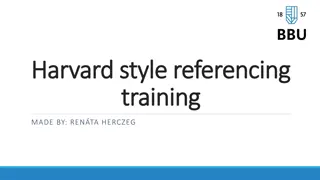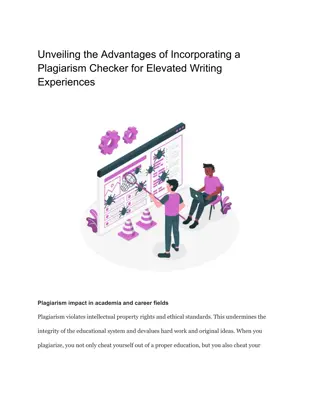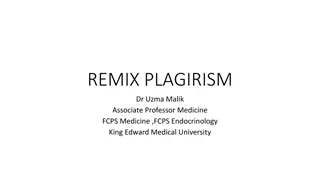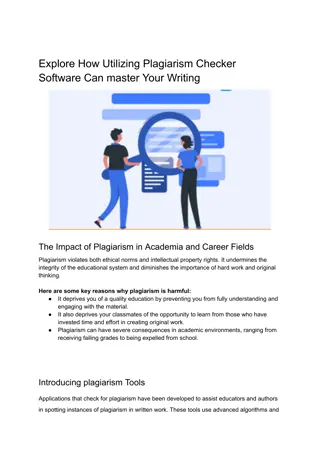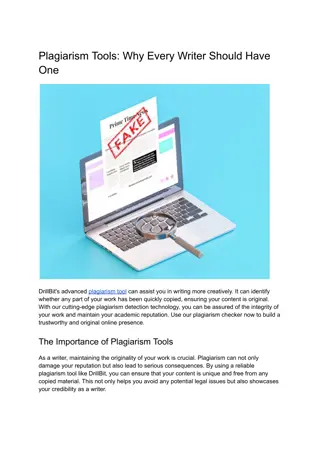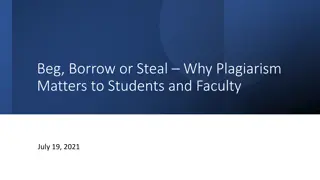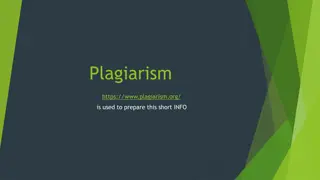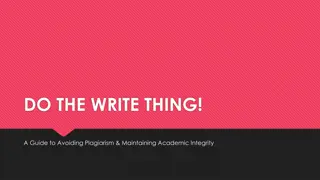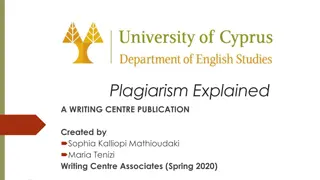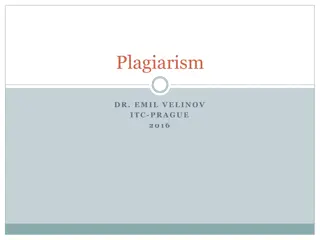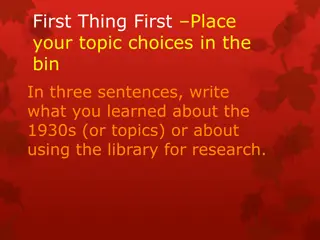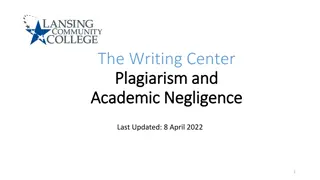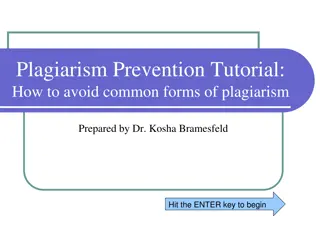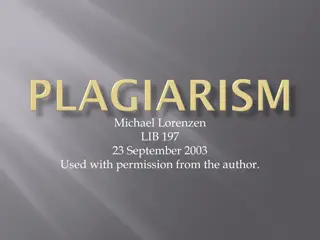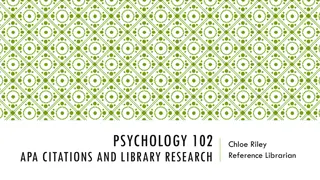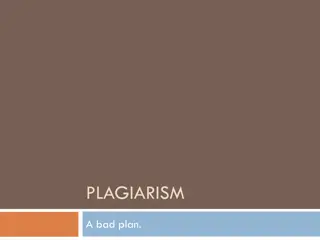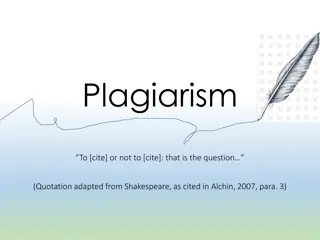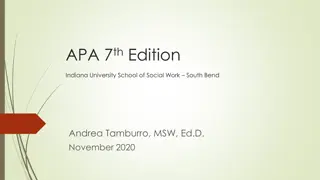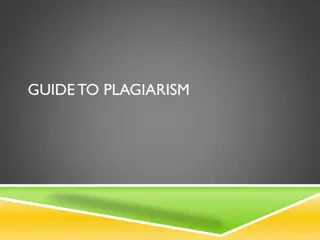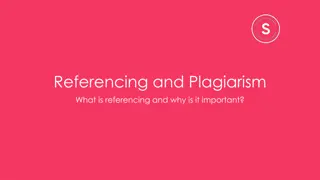Understanding and Avoiding Plagiarism: Types, Consequences, and Prevention
Understand the five types of plagiarism, from intentional to unintentional, and learn how to identify, avoid, and properly cite sources to prevent academic dishonesty. Explore techniques for paraphrasing, quoting, and documentation styles like MLA and APA to ensure academic integrity.
Download Presentation

Please find below an Image/Link to download the presentation.
The content on the website is provided AS IS for your information and personal use only. It may not be sold, licensed, or shared on other websites without obtaining consent from the author. Download presentation by click this link. If you encounter any issues during the download, it is possible that the publisher has removed the file from their server.
E N D
Presentation Transcript
T THE HE F FIVE P PLAGIARISM LAGIARISM IVE T TYPES YPES OF OF How to Understand and Avoid Academic Dishonesty Adapted by Professor Foss from Theresa Waliezer s in-class presentation
WHAT IS PLAGIARISM? Presenting another s original thoughts or ideas as your own Using another s exact words without quotations and proper citation Repurposing your own work for another assignment or class
HOW TO AVOID PLAGIARISM Understand its definitions & consequences Identify the different types of plagiarism Learn techniques for notetaking, summarizing, paraphrasing and quoting Learn proper documentation systems, such as MLA, APA and Chicago styles
UNINTENTIONAL PLAGIARISM Paraphrasing poorly: changing a few words without changing the sentence structure of the original, or changing the sentence structure but not the words. Quoting poorly: putting quotation marks around part of a quotation but not all of it, OR around a passage that is partly paraphrased. Citing poorly: not citing clearly, regularly or accurately, both in-text and at end of papers. MLA Handbook for Writers of Research Papers, 7thedition, The Modern Language Association of America, 2009.
INTENTIONAL PLAGIARISM Using pre-written papers, borrowed or purchased from the Internet or other sources. Copying parts of an essay, article or website from the Internet or electronic database without quoting or giving credit. Cutting and pasting from more than one source to create a paper without quoting or giving credit. Borrowing words or ideas from other students or sources without giving credit. MLA Handbook for Writers of Research Papers, 7thedition, The Modern Language Association of America, 2009.
THE FIRST TYPE OF PLAGIARISM Plagiarism of Words The use of another s exact words without quotation marks and crediting the author or source Incorrect Plagiarism is the reproduction of someone else s words, ideas or findings and presenting them as one s own without proper acknowledgement. Correct Plagiarism is the reproduction of someone else s words, ideas or findings and presenting them as one s own without proper acknowledgement (Undergraduate Course Handbook 24)
THE SECOND TYPE OF PLAGIARISM Plagiarism of Structure Poor paraphrasing that uses original phrasing and/or sentence construction even when source is cited Original: Most important is that you check with your instructor if you are unsure about the way that you are using a particular source (MLA 10). Incorrect: According to the MLA, it s important that you check with your teacher about the way you are using a specific source (10).
THE THIRD TYPEOF PLAGIARISM Plagiarism of Ideas Presenting another s ideas as your own by not crediting the original thinker, researcher, or writer properly in your work Original: We need a system for documenting sources that begins with a few principles rather than a long list of rules (MLA 3). Incorrect: In today s world, I think it s time for a new method of documentation based on principles, not lengthy rules.
THE FOURTH TYPEOFPLAGIARISM Plagiarism of Authorship Turning in a replication of another s work as your own Submitting a paper that you bought, borrowed or copied from the internet or a friend and presenting it as your own
THE FIFTH TYPEOFPLAGIARISM Plagiarism of Self The use of previous work for a separate assignment or course. Although these were your original words and/or ideas, receiving credit for a previous assignment is academically dishonest. In some cases a professor may allow continuation or adaptation of previous work, but you MUST have their permission
THE PENALTIESOF PLAGIARISM Although plagiarism can be intentional OR unintentional, both have serious consequences, including: Receiving a failing grade on the assignment Being reported for Academic Dishonesty Meeting with faculty, dean and/or VP to discuss Failing the course Suspension or expulsion for repeat offenders See Centralia College s policies at: http://www.centralia.edu/students/rights.html
TO LEARNMORE www.centralia.edu/academics/writingcenter/ https://style.mla.org/plagiarism-and-academic- dishonesty/ https://owl.english.purdue.edu/owl/resource/589/01/


